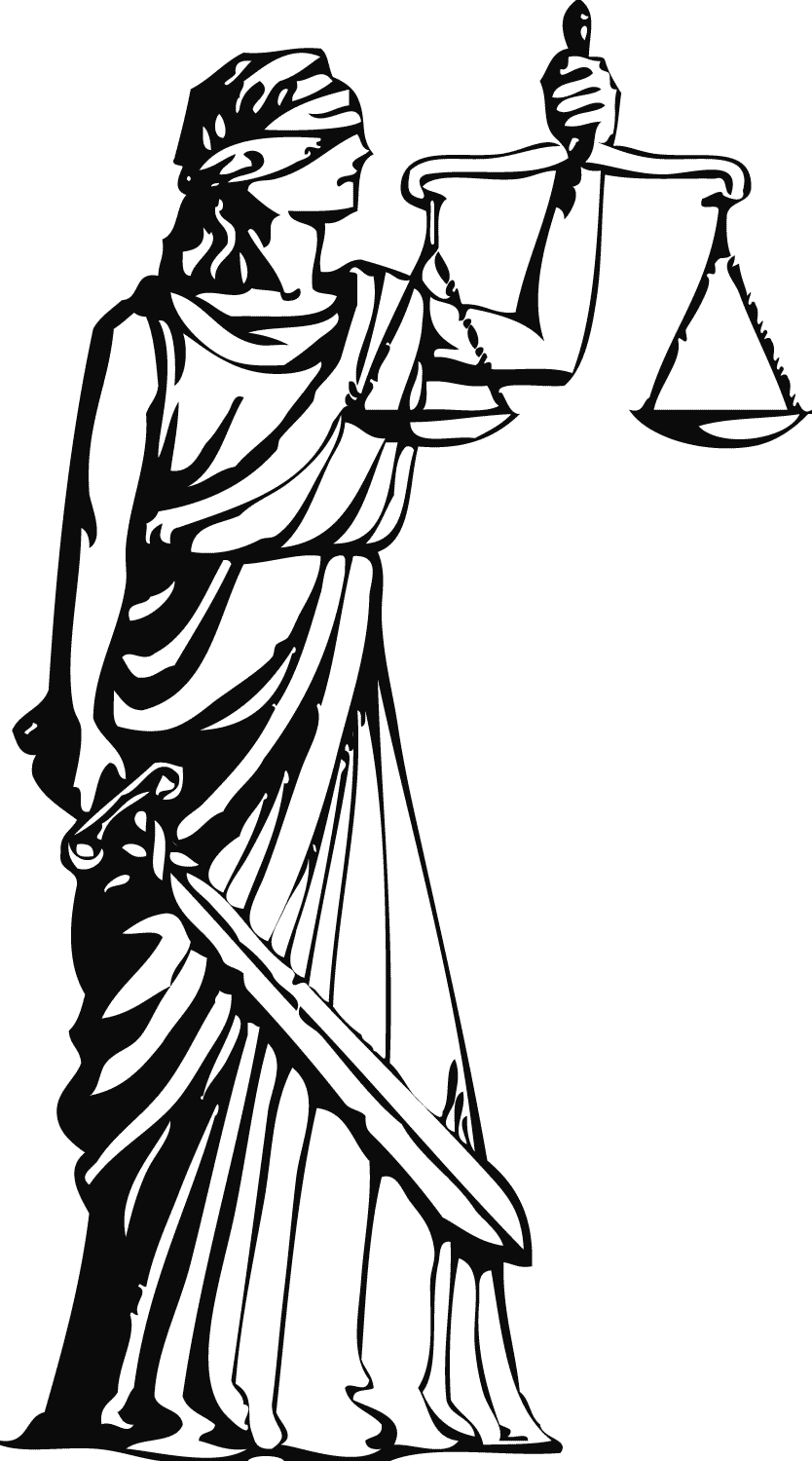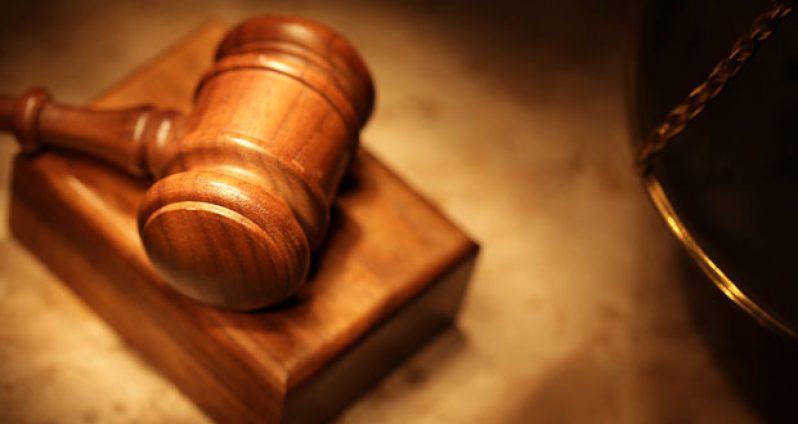BECAUSE of a miscarriage of justice, Mark Anthony Wong who was sentenced to death in 2008 appealed his sentence and had his appeal allowed in part, because the trial judge had left unexplained to the jury certain aspects of the defence.
“Wong’s conviction of murder for the killing of Troy in 2008 was set aside, and he was sentenced to 12 years’ imprisonment on a conviction of manslaughter.
Justice of Appeal the Hon. Charles Ramson, S.C., who delivered the judgment of the Guyana Court of Appeal, began his judgment by saying: “Lord Buckmaster, former Lord Chancellor of England, in an address to the American Bar Association, captured the essence of the determination of this appeal.”
He went on to say: “Justice was a goddess whose symbols are known to all, a throne that tempests cannot shake, a pulse that passion cannot stir, eyes that are blind to a feeling of favour or ill-will, and the sword that falls on all offenders with equal certainty and with impartial strength.”
Justice of Appeal Ramson added, “Placed in charge of a jury of his peers, 12 ordinary Guyanese ladies and gentleman, the appellant Mark Anthony Wong was convicted of the capital offence of murder after two and one-half hours of deliberation.
“He was sentenced to death by hanging, in accordance with the mandatory provision of S. 100 of Criminal Law Offences Act, Chap 8:01.
“As we will see later, it would appear that the verdict of the jury was arrived at after they rejected his major defences – of the self-defence and accident, for which the aforementioned Act made provision in S.106, which expressly countenances that Common Law principle.
“No punishment or forfeiture shall be incurred by any person who kills another person by misfortune, or in his own defence, or in any other manner without felony.
“The evidence that emerged was without any undue measure of convolution or prolixity, nor was it stacked with divergent minutiae.
“Equally, it ought not to have presented the jury with a task that required an intelligence quotient beyond the average man in the street.
“In short compass, five relatively young Guyanese men met at a beer garden on the East Bank of Demerara River and, in the course of their rendezvous, they consumed ‘a large’, one half bottle of Vodka, with one of them drinking a Mackeson stout as well.
“To a libating sociophile, at a maximum, each one of them would have consumed a little more than seven ounces in volume, commonly called ‘shots’, in more than 5 hours.
“Thereafter, 1 o’ clock the following morning, invited by the accused, who was armed with a wooden bat, they went into a nearby village, Diamond New Housing Scheme, in search of two girls.
“On the outskirts of that village, the accused advised them to arm themselves with pieces of wood in the event they encountered any dogs on their way. Two of them did, but the deceased, who was called ‘Troy’, did not.
“The dam along which they walked was unpaved, and it would appear (that) the deceased and the main witness, one Esau, were in the lead, followed by the accused and two others, Cheezy and Bulbar.
“On their approach to a building, which appeared to have been identified by the accused as the location they would meet with the girls, the deceased and he had an exchange of words followed by the infliction of the fatal injuries to the former at about 3am.
“This episode is captured in the Caution Statement given to the police within less than hours of the incident, to which no objection was offered by Defence Counsel before the jury. That statement read: ‘When we reach the corner we stop, and de boy what dead start for talk up where we are going, and he lashed me with a bottle and I tek de bat and I put two lash on he at he head. He run and fell down’.”
Continuing his judgment, Justice of Appeal Ramson added: “His statement from the dock at the close of the case for the Prosecution corroborates this, save (for) the minor emendations which, though they may have resulted in a diminished inculpatory effect, did not neutralize the admission contained therein.
“I set out the whole statement for the avoidance of any suggestion of conjecture or inappropriate interpretation”.
The set out statement read: “Whilst walking going in Diamond New Scheme, we walking and deh gaffing all the time. Troy tell me I is a mad man, me ain’t know which part I am going. I told him (to) shut he mouth, I know which part I am going. He start to argue with me. He lash me with a bottle and burst my head. He go to lash me a second time, and I also lash him back. That’s all”.
Continuing, Justice of Appeal Ramson added: “A medical doctor testified for the defence and verified that the appellant had a ‘swelling to left temporal region’ when he examined him within 14 hours of the altercation in question.
“Before concluding this summary of the events, it is necessary to indicate that the main witness, Esau, testified that after the deceased was given the first lash in his head, he fell down and the appellant administered five to six more lashes in the region of his head. A pathologist also testified that there were several injuries consistent with Esau’s testimony, some of which could have resulted in his death.
“It was therefore hardly surprising that the jury reached the verdict that they did. But was the law relevant to their deliberations properly and adequately explained to them by the Trial Judge; and secondly, did she give them the amplitude of or the requisite assistance on the factual issues by an appropriate evaluation in resolving those issues that arose during the trial, so that the appellant could be said to have had a fair trial?
“We found it difficult, if not impossible, to infer from the evidence, taking the most favourable view of the defences, that the appellant’s life was ever seriously endangered as to justify or excuse the use of a wooden bat to inflict the fatal blows to the head of the deceased.
“However, we were concerned that the passage set out earlier and hereunder, left unexplained and without the clearest direction to the contrary by the learned trial judge, may have left the jury in a sta te of confusion and, perhaps, uncertainty, and thereby may have deprived him of the benefit of a verdict of manslaughter. The indefensible direction is now set out.
te of confusion and, perhaps, uncertainty, and thereby may have deprived him of the benefit of a verdict of manslaughter. The indefensible direction is now set out.
“The provocation depends on the fact that it may cause in a reasonable man a sudden and temporary loss of self-control, and the intention to kill or cause grievous bodily harm is absent.
“This may have resulted in a miscarriage of justice, and would be inconsistent with Lord Buckmaster’s concept of justice embraced at the commencement of this judgment.
“As the High Priest assigned to grant relief, this court would be amiss in its responsibility if this cardinal directional deficiency was given our approbation.
“In these circumstances, and applying LEE CHUN-CHUEN v. R. (1963) 1 ALL E.R. 73 in part, the conviction and sentence for murder are hereby set aside and a verdict of manslaughter is hereby substituted.
“The appellant is sentenced to 12 years’ imprisonment. (Appeal allowed, in part.)
The Guyana Court of Appeal was constituted by Hon. Carl Singh, Chancellor (ag.) and Justices of Appeal the Hon. C. R. Ramson, S.C. and the Hon. B.S. Roy. Mr. B. De Santos, S.C., appeared with Mr. Huckumchand for the appellant. Ms. S. Ali-Hack, D.P.P., with Ms. Jo Ann Barlow, Deputy D.P.P., appeared for the State.
By George Barclay
Justice was a goddess whose symbols are known to all, a throne that tempests cannot shake, a pulse that passion cannot stir, eyes that are blind to a feeling of favour or ill-will, and the sword that falls on all offenders with equal certainty and with impartial strength.




.png)









